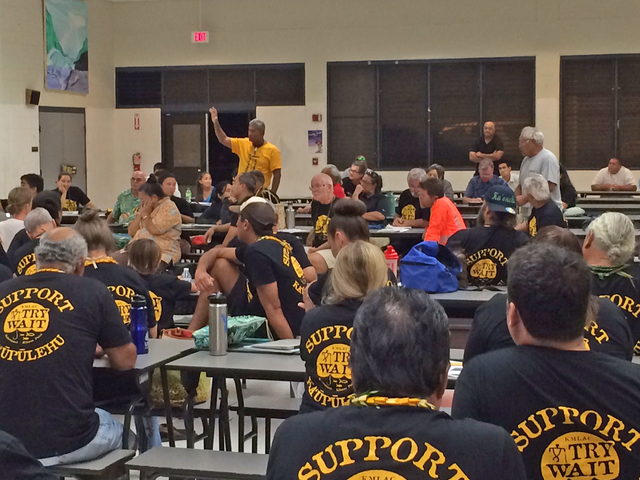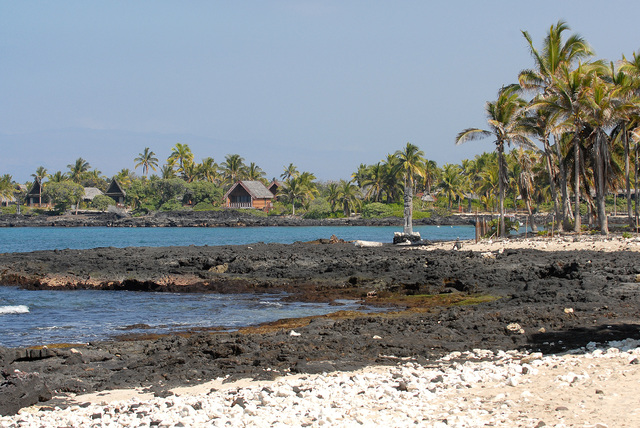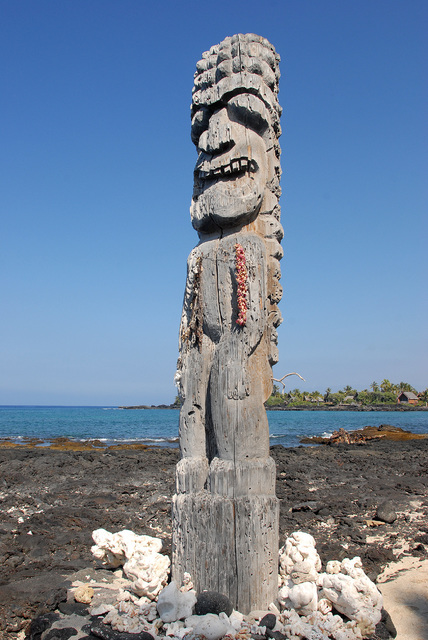KAILUA-KONA — “Support Kaupulehu, Try Wait.”
Those were the words blazed in yellow on the black T-shirts of more than 100 people — part of a group twice that number who showed up to have their say on a new plan to put a stretch of the North Kona Coast off limits to most fishing for the next decade.
Thursday evening, officials with the Department of Land and Natural Resources considered a rule amendment that would establish the Kaupulehu Marine Reserve, where no marine life could be taken inside of 120 feet of water. The kapu is being proposed to allow the shoreline ecosystems near the Four Seasons Resort Hualalai a chance to recover from what some say has been years of overfishing.
Public access to the reef and usage of its resources have increased significantly over the years, said Charles Young.
“It’s a good idea any time the community supports community-based resource management,” Young said.
The proposed rule would ban shore fishing on 3.6 miles of coastline at Kaupulehu Bay while a management plan is crafted based on traditional Native Hawaiian subsistence practices. The areas would be set within an existing fish replenishment area that already bans the collection of aquarium fish.
The “Try Wait” initiative is the first of its kind for the island, and not without its detractors.
But the concept is not unique, said Natalie Kurashima, a University of Hawaii research student who has spent the last four years working with the Kaupulehu community on the initiative.
“Long-term closures in Fiji are common, and many villages have decided to make their closures permanent,” said Kurashima. “We support the community’s decision to manage their own resources.”
The plan was put together over a five-year period by the Kaupulehu Marine Life Advisory Committee. Families with links to the area that go back generations proposed the ban after increased public access to the area began to stress reef fish and mollusk populations.
A long line of residents talked about the need to protect the aina and to put in check a modern impulse toward plunder that is out of step with the needs of the ecosystem and traditional practices.
Hannah Springer traces her lineage back many generations at Kaupulehu.
“This shore was isolated until March of 1975, when the Queen Kaahumanu Highway was built across the lava plain,” Springer said. “We immediately saw a decline in fish and shellfish.”
Bill Walsh, a marine biologist with the Division of Aquatic Resources, said studies show the Kaupulehu area has seen “precipitous” declines in food fish since the 1990s. Studies in 2012 and 2013 show the biomass of the area is less than protected areas on the coast but also less than other open areas in West Hawaii, he said. Data from multiple West Hawaii sites show 30 to 60 percent declines in food fish over the past two decades, Walsh said.
Walsh was peppered with questions about whether fishers or invasive species were causing the declines. Some angrily declared that the plan doesn’t recognize Native Hawaiian gathering rights. One man asked what the state plans to do to enforce the rules that are already on the books.
Walsh acknowledged that enforcement officers are spread thin. But he noted that the kapu would be obvious and readily enforceable.
“Someone can get on the phone and say someone is throwing a net here,” Walsh said. “Enforcement is something that is everyone’s kuleana.”
A teenage Lai Bertelmann practiced her testimony outside the door of the Kealakehe High School cafeteria as people lined up to enter.
“We need to help the fish so they don’t go extinct,” Bertelmann said. “By letting them rest, we will allow their recovery.”











